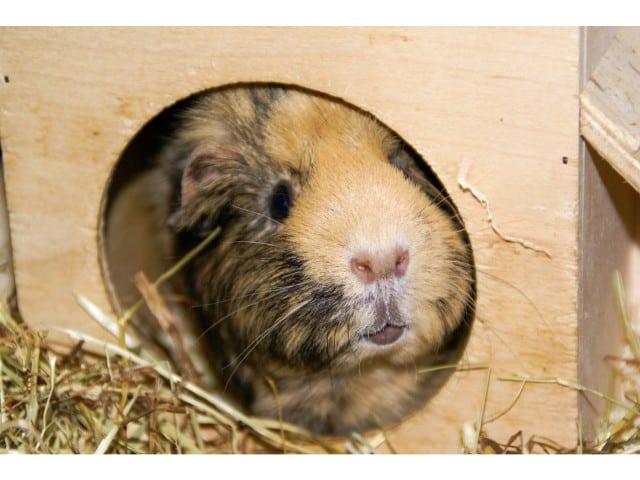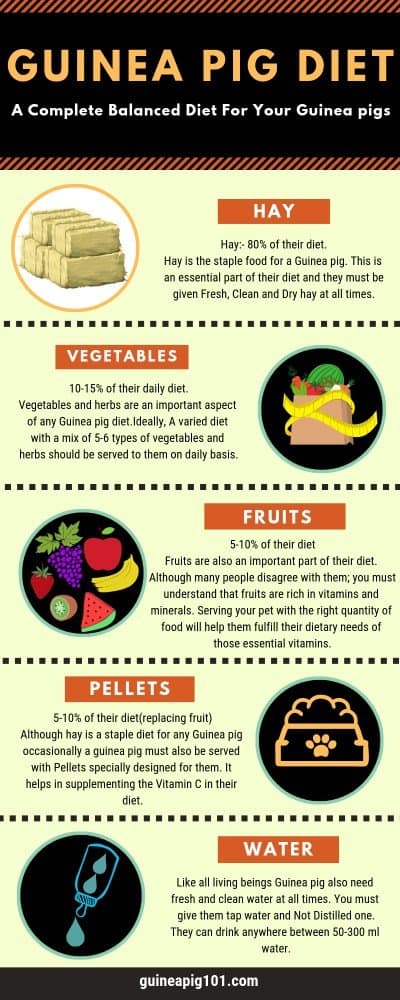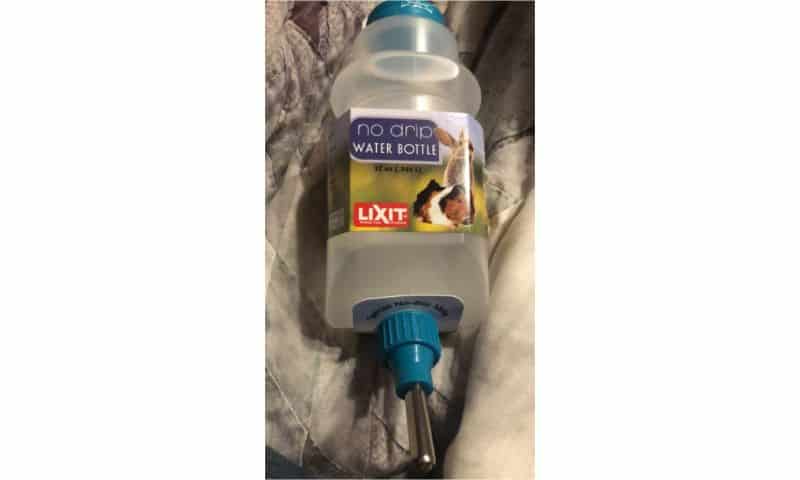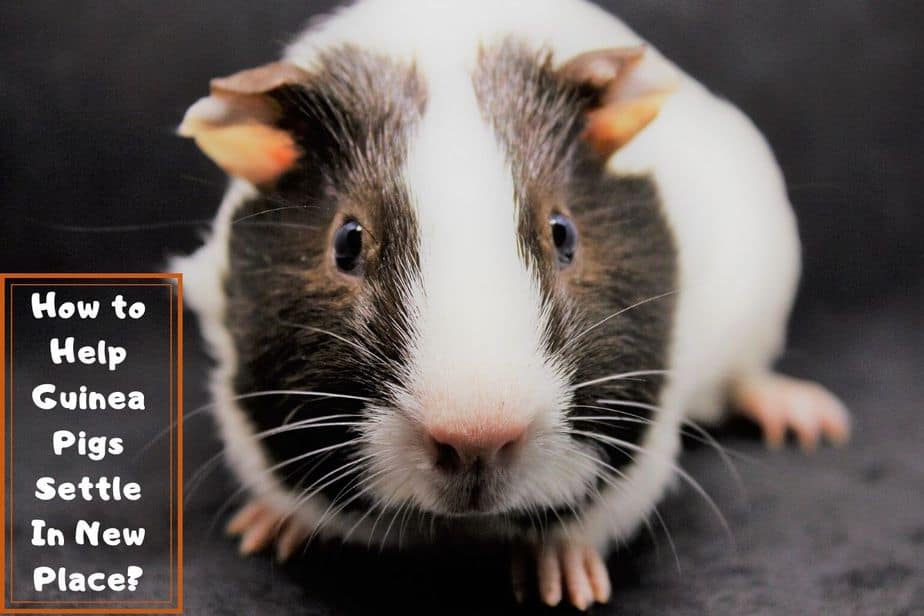Petting and cuddling your new guinea pigs can be tempting for guinea pig owners, but they might need to wait for some time so that their guinea pigs can settle in.
The next question that comes to their mind is, how long do guinea pigs take to settle in? When can I start petting and cuddling them? As a new guinea pig owner, even I had the same excitement in me. I did some research on it, and here is what I learned.
It may take anywhere between three days to three weeks for your guinea pigs to settle in a new environment. Don’t feel discouraged if your guinea pigs take a little longer to settle in. While some well-socialized guinea pigs get settled within a day or two, others may need a few weeks to settle in.
If you get your guinea pigs from a professional breeder or a good shelter, then such guinea pigs do settle in quickly as compared to guinea pigs sold from pet stores.
Unlike pet stores, breeders and shelter homes provide guinea pigs with a lot better living environment, and they also interact with the guinea pigs well, which makes the piggies used to human interaction.
Guinea pigs are prey animals, and they get scared when introduced in a new environment. They may take some time to explore their new enclosure and get used to eating and living there.
You can make the procedure of getting settled in less stressful for them by getting their enclosure setup beforehand and getting it prepared for the guinea pigs.
So, let us have a brief look at what you need to set up to make sure your guinea pigs feel like home when they arrive.
What you need before getting a guinea pig?
There are a few necessary supplies you would need before getting your guinea pigs home.
You will need to look for or build an enclosure for them, along with that you will need some bedding material, their food supplies, toys, hiding spaces, etc. for them to live happily.
Setting up everything correctly is crucial as it can reduce the stress to guinea pigs and help them settle in a lot faster. Let’s have a look at all the supplies in brief.
Setting up an enclosure:
The first step in setting up the living space for guinea pigs starts with choosing the enclosure for them. Before selecting a pen, you need to keep in mind your guinea pig’s requirement first. So, let’s have a look at it first:

- It would be best if you have at least 7.5sq. Feet space for a pair of guinea pig and an additional three sq feet per guinea pig as you get more of them.
- The room must have enough lighting, but no direct sunlight should fall at the cage.
- Make sure their living maintains a stable temperature between 16°C(60°F) to 24°C( 75°F ). Anything above or below that would need additional care to keep them healthy.
Once you have a space in mind, you can go ahead and decide a cage for your guinea pigs.
Choosing the cage depends upon how many guinea pigs you plan to keep. If you plan to keep just a pair of them, then going for a Midwest cage or a Living world cage would work fine.
However, if you want a herd of more than two guinea pigs, you must look into the DIY C&C cage for your guinea pigs. You can learn more about guinea pigs cage from our other articles:
I would also recommend you to read How to keep guinea pigs cool in summer or How to keep guinea pigs warm in winter if the temperature around your area is a lot different from their normal range.
Choosing the right bedding:
Bedding is one of the essential parts of the guinea pig’s cage. Guinea pigs spend most of their time in their cage, which means they pee and poop all around it.
Having a quality bedding can absorb the pee and thus keep the pen dry and odor-free. Poor quality bedding can get soaked quickly and can lead to some fatal diseases like bumblefoot in guinea pigs.
Some bedding like pinewood shaving also possesses a risk of respiratory diseases among guinea pigs. Thus, make sure you only use good quality bedding in your guinea pigs cage.
Fleece bedding, aspen wood shavings and paper bedding are some of the wide variety of bedding available in the market. You can learn more about types of bedding and which one to buy from our complete buyer’s guide:
Getting some hiding spaces in:
As you set free your guinea pigs to a new environment, they will look for hiding spaces ASAP.

Being prey animals, they find themselves vulnerable in the new environment. Thus, having a lot of hiding spaces is essential.
You must at least have one hiding space available for each guinea pig you get into the cage.
Tunnels, snuggle beds, Fleece hidings, and boxes are some great options to go for. You should also add a few toys in the cage: bridges, Hammocks and Apple chew sticks work great. Check out our guinea pigs favorite picks:
Providing basic food supplies:
Guinea pig’s diet consists of hay, vegetables, fruits, pellets & treats. While hay is the staple part of their diet, which provides guinea pigs with much-needed fiber, vegetables, fruits, and pellets are a rich source of Vitamin C and other nutrients.

It would be best if you give a few piles of hay around guinea pig’s cage. Guinea pigs need access to hay at all times, and lack of hay can make them sick, so make sure you get a handful of it from the beginning.
Apart from hay, guinea pigs also need a cup of fresh vegetables daily. Make sure you include some high Vitamin C veggies like Bell-peppers, Romaine lettuce, Etc in their daily diet.
Apart from that, you should also give 1/8 cup of pellets regularly followed by occasional treats of fruits and commercial treats.
Providing a source of water:
Guinea pigs need access to fresh drinking water at all times. Healthy guinea pigs can drink anywhere between 50-300ml of water daily. Thus, getting a few bottles of water all around the cage is a good idea.

Always make sure you have multiple water bottles, that help in reducing fights and dominance behavior in guinea pigs, which can occur within a few days of settling in.
Also, make sure you get good quality leak-proof guinea pig water bottles only as some leaky bottles can soak the entire bedding in the night and make your guinea pig’s sick.
Food bowls for veggies or pellets:
Food bowls are another essential supply you need to get for your guinea pigs. They are used to serve fresh veggies and pellets to your guinea pigs.
You can serve vegetables and pellets by spreading a handful in the cage. However, that does get messy over time and will require more maintenance.
Once you get them and leave them in their new enclosure, you can follow the steps below to make sure they get settled in comfortably.
Make sure you don’t start petting or cuddling them when you first get them as it can make them stressed out!
How do I get my new guinea pig to settle in?
Guinea pigs might take anywhere between a few days to a week to get settled in the cage.
Here are a few steps you might need to take to ensure the transition is as smooth as possible:
Leave them alone for a day or two
When you put a guinea pig in a new environment, then it might need some time to come out and explore the environment.
As everything is unique for the guinea pigs, they may have a fear of uncertainty. It is a wise move to leave them alone once you stock their food up for a day or two.
Do check back on them every few hours, however, avoid petting them or trying to hold them at all.
Guinea pigs might not come out when you are around so, leaving them alone makes the process much easy.
Once they get used to the environment, start exploring, and comes out of the hiding, you can move to the next step.
Sit around the cage and try to converse with them
Once your guinea pigs become familiar with the environment, you might start the bonding process with them.
Try sitting next o the cage and conversing with them. You might sing a song, tell them a story, or just speak about your day.
It might sound a little crazy for some people, but trust me, it doesn’t matter whether they can understand you or not.
Conversing with them will get them used to you and your voice, and thus, they will consider you as a part of the environment and not a threat to them.
Avoid sudden movements or loud noises
Avoid any sort of sudden movement or loud noises as your guinea pigs might get stressed out due to it.
Guinea pigs are prey animals, and they might feel vulnerable if something is stressing them out. So, make sure you remain calm and walk slowly around their cage area.
Usually, conversing with them for a few days does the trick.
Feeding their staple diet
If you get your guinea pigs from a breeder or shelter, do enquire about their diet history. Guinea pigs have a sensitive digestive system, and a sudden change in diet can offset their balance.
Feeding a staple diet of hay, followed by the same vegetable & fruits that were previously fed to them, often helps them in settling down quickly.
If you don’t have any idea about their previous diet, try by offering some not watery veggies like Bell-peppers and Carrots and slowly move to the watery ones.
Do try out a variety of vegetables with them but introduce one at a time only. Once your guinea pigs get used to eating around you, you can try and move to the next step.
Try hand-feeding with some treats
Once your guinea pigs get used to your presence, you might try hand-feeding them.
Take a large slice of carrot or some fruits like banana and offer them from your hands. Make sure you don’t get pushy(or you will blow the chance), wait until they come by themselves to take a bite and let them have it.
Handfeeding often helps in developing a close bond with your guinea pigs. You can try hand-feeding them for some days; then you might go ahead and start petting them.
Learn about dominance and what you can do about it
Guinea pigs will fight to prove dominance and secure their territory once they start getting settled in the new environment. The fight begins with some vocal confrontation and if one doesn’t back off then it might turn into a physical one.
That might come as a big shock for some people, but it is better to research about their dominance behavior beforehand so that you know what’s going on and what you can do about it.
I would suggest you read our guide on guinea pig dominance so that you can understand it better.
Consult a Vet in case of any problems
If you have researched about guinea pig care and followed our guide till now, then everything should have gone well for your piggies.
However, if you feel something is not right, your guinea pig is not eating even after a few days of being in the cage, or they are showing any signs of sickness, then you might need a vet visit immediately.

Do make sure you have listed out some exotic vet address and number in the early days so that you can consult them in case of any assistance.
Signs your guinea pig has settled in?
Once you have prepared the ground and waited for a few days, you might be wondering, are my guinea pigs settled in? How do I know if they have? So, here are a few signs that you can look out for to make sure your guinea pigs have settled in:
- Your guinea pigs are exploring around the cage freely, and are not running for the hiding now and then.
- The guinea pig has started coming out for food even when you are around.
- You will also notice your guinea pigs have started making a wide variety of sounds. Starting with purring, squeaking, rumbling, etc. there is a wide range of sounds that guinea pigs start making while conversing with each other.
- Your guinea pigs are not scared as much. They come out rather quickly, even if they sometimes run for the hiding.
- They have started taking some food from your hands.
Conclusion
So, how long should you wait before your guinea pigs get settled in? You might need to wait anywhere in between 3 days to 3 weeks before your guinea pigs feel like home.
Always make sure you have done thorough research about guinea pig’s care and the supplies you need for them before you get them.
Once your guinea pigs start showing the signs that they have settled in, you can go ahead and start hand feeding them and petting them if they allow you to do so.
If they don’t enjoy it, you might need to wait for few more days before you can pet them or cuddle them.
Sources: RSPCA, Small animal care, Guinea Pigs: Aggression and Dominance, Guinea pig fathers pass on adaptive responses to environmental changes
